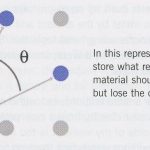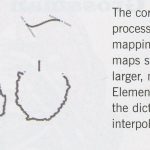Marc Downie: Experiments on Intelligent Form
Artist(s):
Title:
- Experiments on Intelligent Form
Exhibition:
Creation Year:
- 2002
Category:
Keywords:
Artist Statement:
This work shows three pieces from an investigation into “intelligent form.” For a number of years now, I have been looking at the problem of creating autonomous virtual creatures that interact, move, and learn in real time. Central to these problems are a number of conceptual difficulties in how such simple artificial intelligences represent their “bodies” and the movements that they can perform. This work takes investigations on body representations far away from typical computer graphics techniques, and very different from the now traditional and reassuringly familiar representations of triangles, meshes, skeletons, and key-frames.
In this work, we use simple forms: a square, a single curve, and a family of curves. The representations in this work encode learned knowledge about form against which other forms can be evaluated, animated, perturbed, and grown. These knowledge structures are deliberately incomplete, and the potential for mistakes in such representations is clear and important. We are not concerned here with the optimality of a result, or the robustness of an algorithm, but with the expressive power of a process, its mistakes, its adaptations.
The presented artworks collect a number of images from three of these experiments. Each panel explores a representation that connects generation and analysis, and each collection is laid out to suggest its journey or an unfolding process.
Technical Information:
This work draws upon and expands upon research conducted in the Synthetic Characters Group and the MIT Media Lab, in particular their design of graphics and animation (or “motor”) systems for synthetic characters. But its points of departure are minute details of processes that would otherwise be hidden or unnoticed and have, to date, never been shown.
The images were generated by custom-written code taken from this research effort-an effort conducted almost entirely in the Java programming language. Unlike everything else shown by this group, this work was not generated in real time but rather, giving prominence to explorative depth rather than speed, using high-resolution, off-line rendering techniques.
All source graphical material where needed (for Angular Morphogenesis and Curve Dictionary) came from scanned hand-drawn lines.
Process Information:
The term “process,” of course, becomes immediately ambiguous in any work that in itself uses algorithmic processes. Furthermore, the term is especially muddled when its stated research goals center on the very autonomy of these processes. Such algorithmic work is perpetually unfinished, constantly changing and adapting, and particularly resistant to mediation. Any traditionally “finished” artifact that arises during this process is only a fleeting attempt to visualize, contain, or understand potentials and aspects of these processes.
on being square
The “training” procedure encodes radial relationships between the material that goes into building a form. Angular information about which point should go where is deliberately lost, leaving us with an incomplete representation. This piece directly and exhaustively visualizes the mistakes that a particular incomplete and broken representation may make. It shows evaluations of a structure “trained” on a simple square that generates potential fields for form growth. This work comes directly from looking at the problems of creating a form representation suitable for use by an artificial intelligence, one that must be able to generate form and movement, and analyze and evaluate its own movement-combined with a playful rejection of traditional computer-graphical triangles and transforms. The enumeration of all unique images given the rotational and reflective symmetries of the square takes exactly 50 images.
Angular Morphogenesis
This representation and sequence of images includes what on being square rejects; angular information and general organic growth. Here we do not limit the piece to an investigation of a square or the demonstration of process to an enumeration. Instead, in this work, we grow new material and define new movements based on our potential field representation. The sequence of images becomes a story of a circular figure created from an initial single point. The growing form almost succeeds in becoming a straight line-partly through indecision about which way to curl-before wrapping around to create a circular figure.
Curve Dictionary
In building interactive intelligences, one is often involved in creating communication between independent behaviors. For a “creature” concerned with visual form, what is an appropriate “language” and, once considered a language, what linguistic operations can be conducted within it? The final piece in this collection is concerned with a more direct exploration of “example-based” representations. These representations are populated by hand-drawn curves forming the material that is manipulated.
But there are two complementary parts to my “process.” The processes created and visualized in this work fit into an ongoing research agenda, which is an ongoing investigative process in itself. The research agenda is that of the Synthetic Characters Group and the MIT Media Lab, in which I try to work on both large frameworks and small ideas. My large frameworks are the architectures that create complex graphical creatures (exhibited at previous SIGGRAPH conferences), but there are smaller pieces that fill parts of these frameworks or use elements of them as points of departure.
For small is, in many respects, an easy route for digital art, with our canvases often characterized as vast uncharted expanses that almost seem to demand a quick sketch, a playful experiment, a bold exploration. And in many respects what is presented here is small-a small study of poorly understood algorithmic processes. But such processes have been used (and hidden) inside larger works, and larger works have encouraged and nourished these small ideas. This fluidity between the design and implementation of large architectures and focused work on small ideas is important for the process behind this work and important for digital art (in particular interactive works) in general, as it moves beyond smaller, playful experimentation into larger and inherently more collaborative works.
Affiliation Where Artwork Was Created:
- Massachusetts Institute of Technology










